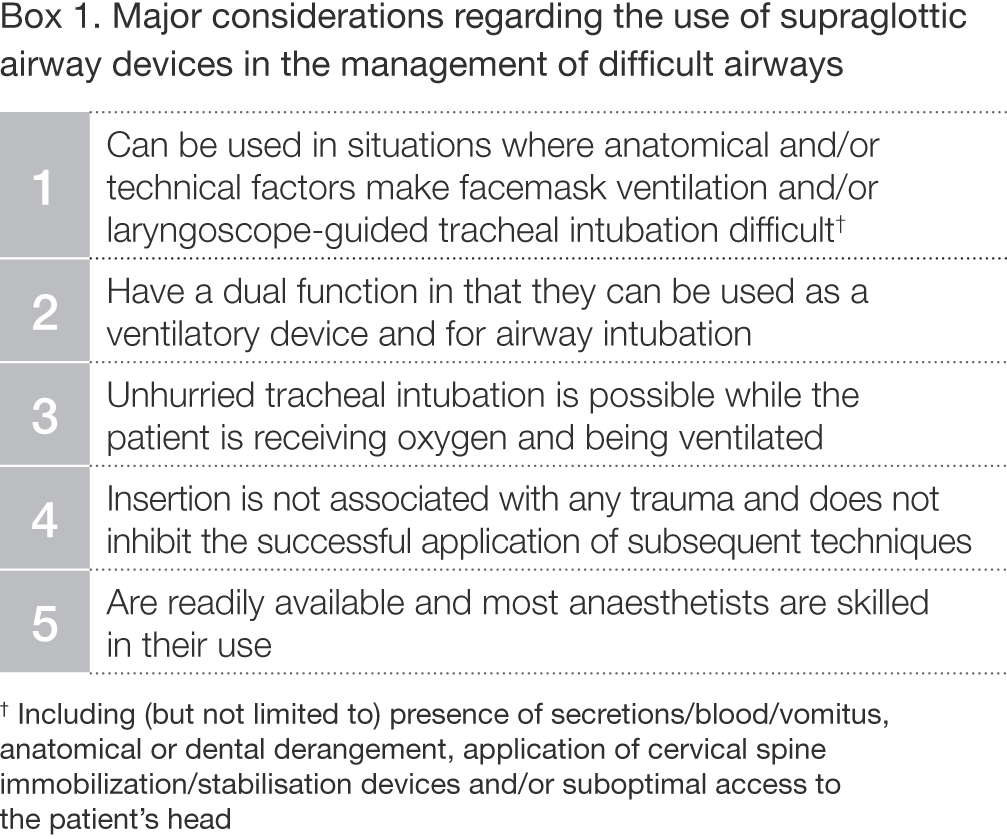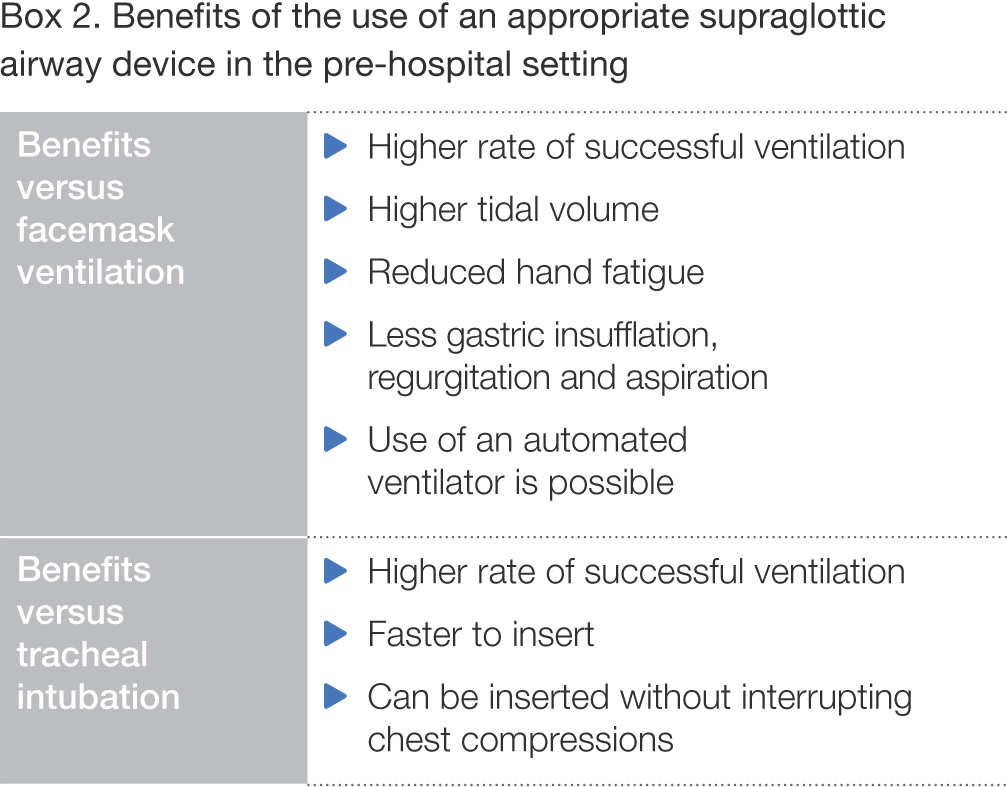Supraglottic airways in difficult airway management: successes, failures, use and misuse
Authors
Timmermann A.
Publication
Anaesthesia 2011; 66 (Suppl. 2): 45-56.
Summary
- A review of the literature looking into the successes, failures, use and misuse of supraglottic airways in difficult airway management
- Supraglottic airway devices have an important role to play in the management of patients with difficult airways
- Newer, second generation supraglottic airway devices, including the LMA Supreme™ and the LMA ProSeal™, may offer clinical advantages over older devices in patients with difficult airways
Findings:
Introduction
- Supraglottic airway devices can be classified into first and second generation devices
- First generation devices, so-called ‘airway tubes’, include the gold-standard LMA Classic™ and other standard devices
- Second generation devices, which have specific features designed to improve safety outcomes (e.g. higher oropharyngeal leak pressures, drain tubes, etc.), include the LMA Supreme™, LMA ProSeal™ and i-gel™
General considerations
- There are five major considerations regarding the use of supraglottic airway devices in the management of difficult airways (Box 1)
- The use of supraglottic airway devices is recommended in numerous societal and national guidelines on the management of difficult airways
Comparison of supraglottic airway devices in the management of difficult airways
- There is a considerable amount of published data on the use of the ‘gold-standard’, first generation LMA Classic™ in patients with difficult-to-manage airways
- Case reports and series describing successful ventilation with newer, second generation devices in patients with difficult airways are also available
- Although newer devices offer benefits compared with older devices (e.g. higher airway pressures, reduced risk of gastric insufflation, reduced risk of regurgitation and aspiration, etc.), the clinical advantage of such benefits in patients with difficult airways has not been established
- There are insufficient data to suggest that any one of the newer devices is superior to the others in difficult-to-manage patients
Intubation via a supraglottic airway device
- There is a considerable amount of published data on the use of the ‘gold-standard’ LMA Fastrach™ for blind intubation via a supraglottic airway device in patients with difficult-tomanage airways
- Blind intubation via other supraglottic airway devices often fails, necessitating the use of fibre-optic guidance
- Although successful fibre-optic-guided intubation of a difficult airway via other supraglottic airway devices, including the LMA Classic™, LMA ProSeal™ and LMA Supreme™, has been reported, there is insufficient robust evidence to show that such devices are superior to the LMA Fastrach™
Use of supraglottic airway devices in the pre-hospital setting
- Potentially all airways in the pre-hospital (i.e. emergency) setting are difficult
- Supraglottic airway devices offer benefits over facemask ventilation and tracheal intubation in the pre-hospital setting (Box 2)
- Although several supraglottic devices, including the LMA Classic™, LMA Supreme™, LMA Fastrach™ and i-gel™, have been considered for airway management in the pre-hospital setting, there is no robust evidence to support the routine use of any one device over the others
Implications:
- Supraglottic airway devices have an important role to play in the management of patients with difficult airways, and their use in this setting is recommended in several sets of treatment guidelines
- Although newer supraglottic airway devices have benefits versus older devices in difficult-to-manage patients, the clinical advantage of such benefits is yet to be established in well-designed randomised controlled trials
- As yet, there are insufficient data to suggest that any one of the newer supraglottic airway devices are superior to other available devices, including the LMA Classic™

